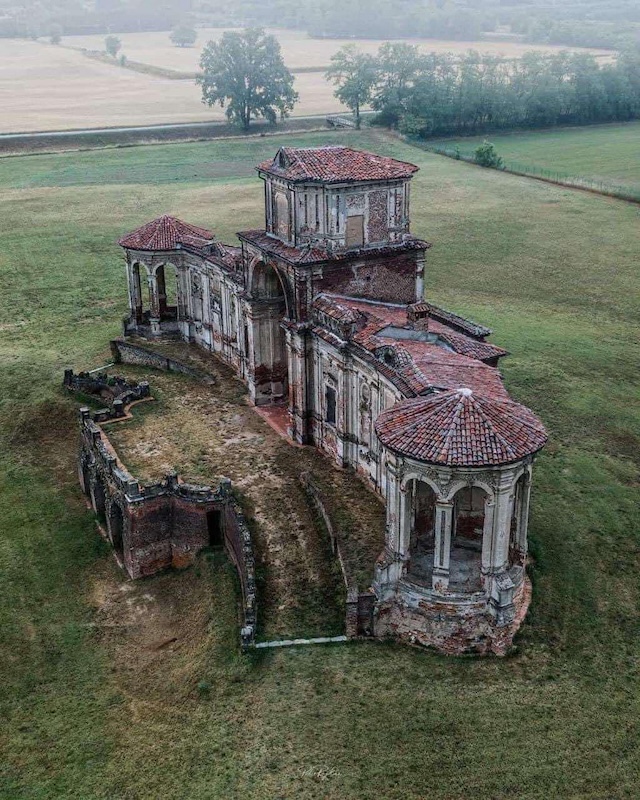Among the rolling fields and tranquil villages of Lombardy, Italy, lies a place steeped in history and mystery. The Castle of Chignolo Po is often celebrated for its grandeur, earning it the nickname “The Versailles of Lombardy.” However, hidden within its sprawling estate is a lesser-known architectural marvel: the Tea House, an enchanting structure that once served as a tranquil retreat for the noble elite. Though its walls have weathered the passage of time, its story endures, offering visitors a glimpse into the leisure and elegance of a bygone era.
The Tea House: A Noble Vision of Leisure
The Tea House was built during the 17th century as part of the extensive renovations initiated by Cardinal Agostino Cusani, a visionary who transformed the Castle of Chignolo Po into one of the most refined residences in Lombardy. Inspired by European baroque aesthetics, Cusani aimed to create a space where leisure, art, and nature came together in perfect harmony.
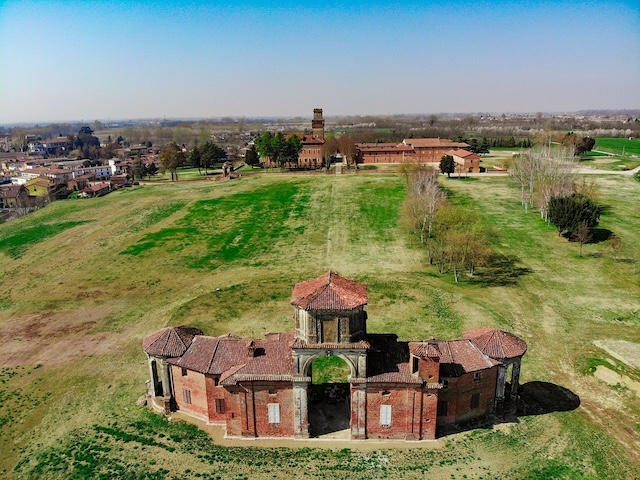
This charming structure was more than just an ornamental addition to the estate. Nestled within the castle’s vast parkland, the Tea House was designed as a sanctuary for relaxation and reflection. It provided an idyllic setting for noble guests to escape the formalities of court life, sip tea, and enjoy intimate conversations amidst the beauty of the surrounding countryside. With its elegant design and serene atmosphere, the Tea House became a cherished part of the castle’s social life.
Architectural Elegance: The Design of the Tea House
Even in its current state of ruin, the Tea House remains a testament to the artistry of its creators. The structure features a wide central arch, flanked by two symmetrical wings with rounded turrets. This layout reflects the baroque emphasis on balance and grandeur. The intricate detailing on the arch and the turrets hints at the craftsmanship that went into its construction, making it a jewel of the estate.
The central arch, a defining feature of the Tea House, was designed not only as a grand entrance but also as a frame for the picturesque views of the surrounding landscape. Guests could stand beneath the arch and take in the rolling fields, perfectly blending architecture with nature. The wings, likely used as seating areas or sheltered spots, added a practical yet elegant element to the overall design.
The Tea House was deliberately positioned to harmonize with the castle’s gardens, creating a seamless flow between indoor and outdoor spaces. Its design encapsulated the ideals of the baroque era, where art and architecture were used to enhance everyday experiences.
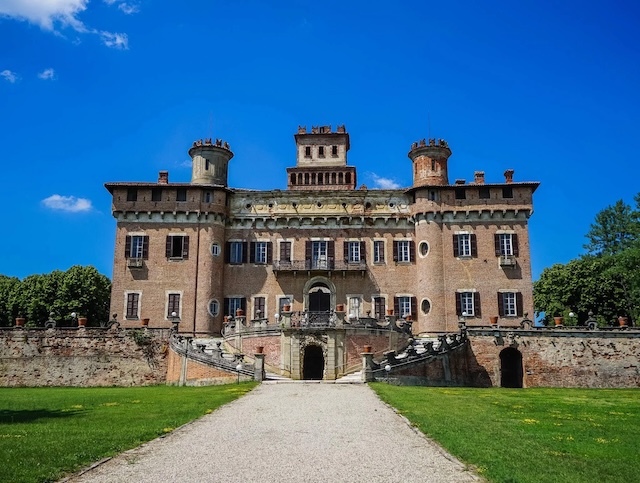
A Place of Leisure and Refinement
The Tea House wasn’t just a beautiful structure; it was a hub of social activity. Nobles and their guests would gather here for tea, light refreshments, and casual conversations. Unlike the grand halls of the main castle, which were often used for formal events and ceremonies, the Tea House offered a more relaxed and intimate setting.
Its location within the park made it an ideal spot for guests to pause and admire the estate’s natural beauty. The surrounding gardens, meticulously maintained during the castle’s heyday, were filled with flowers, fountains, and statues, providing a picturesque backdrop for the Tea House. It was a place where leisure and elegance came together, embodying the lifestyle of the aristocracy.
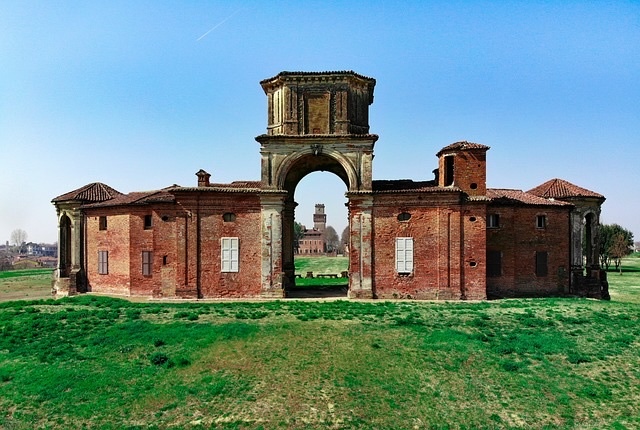
The Passage of Time: From Splendor to Ruin
Like much of the estate, the Tea House has endured centuries of change. While the main castle has been meticulously restored to preserve its grandeur, the Tea House has been left to weather the elements. Today, it stands as a hauntingly beautiful ruin, its weathered walls and crumbling arches telling a story of resilience and decay.
The once-vibrant details of the Tea House have faded, replaced by moss and ivy that now cloak its surfaces. Yet, this natural transformation adds to its allure, giving it a timeless quality that captivates visitors. The contrast between its refined design and its current state of neglect creates a sense of nostalgia, inviting onlookers to imagine the lively gatherings that once took place within its walls.
Despite its deteriorated condition, the Tea House remains an integral part of the estate. Its inclusion in guided tours of the castle has sparked interest among historians and conservationists, raising hopes for future restoration efforts.
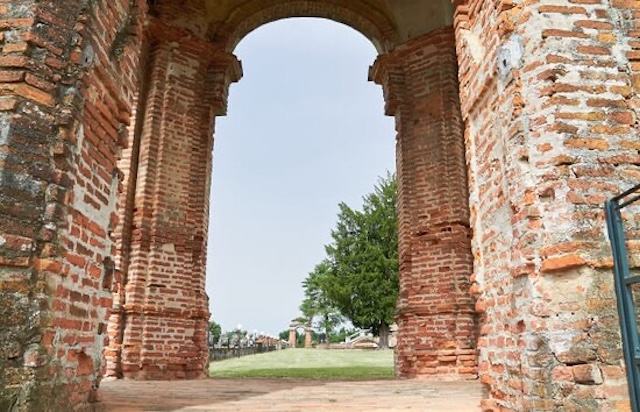
The Tea House Within the Castle’s Legacy
To fully appreciate the Tea House, it’s important to understand its place within the larger context of the Castle of Chignolo Po. The castle’s history dates back to 740, when it was built as a defensive tower under King Liutprand. Over the centuries, it evolved into a Benedictine monastery, a fortress, and eventually a noble residence.
The castle’s transformation into a baroque masterpiece was largely driven by Cardinal Cusani, who sought to create a residence that reflected his status and taste. With the help of Venetian artists and architects, he introduced elaborate frescoes, ornate stuccos, and beautifully landscaped gardens. The Tea House was part of this vision, serving as a space where art and nature intersected.
Throughout its history, the castle hosted numerous notable figures, including Austrian Emperor Francesco I and Napoleon Bonaparte. While the main structure became a symbol of power and prestige, the Tea House offered a more personal glimpse into the lives of its inhabitants.
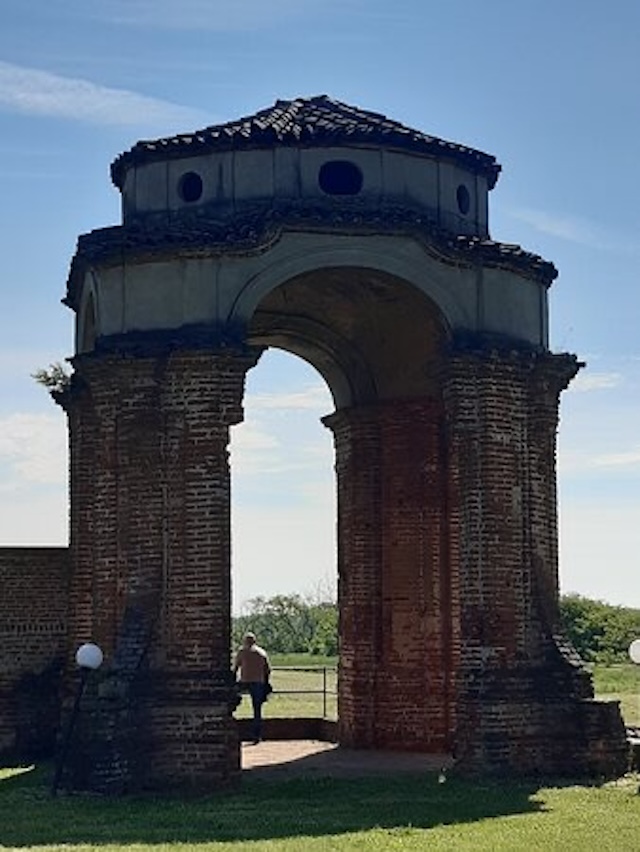
Visiting the Tea House: A Journey Through Time
Today, the Tea House is a highlight of the Castle of Chignolo Po’s estate, offering visitors a chance to connect with history in a deeply personal way. While the interiors of the castle showcase the opulence of baroque art, the Tea House provides a quieter, more introspective experience. Its ruins evoke a sense of wonder, reminding visitors of the passage of time and the enduring beauty of the past.
Guided tours of the castle include a visit to the Tea House, allowing guests to explore its exterior and learn about its history. Though its interior is not accessible due to its fragile condition, standing before its grand arch and gazing at the surrounding landscape is an experience in itself.
Visitor Information:
- Location: Chignolo Po, Lombardy (1 hour from Milan, 30 minutes from Pavia)
- Tour Availability: Saturdays, Sundays, and public holidays (2:30 PM to 6:00 PM)
- Tickets: €10 for adults, €5 for children aged 6–13
- Tours in English: Available with prior booking
For weekday visits, group tours of at least 20 people can be arranged by contacting the estate in advance. It’s recommended to check the castle’s official website for the most up-to-date information.
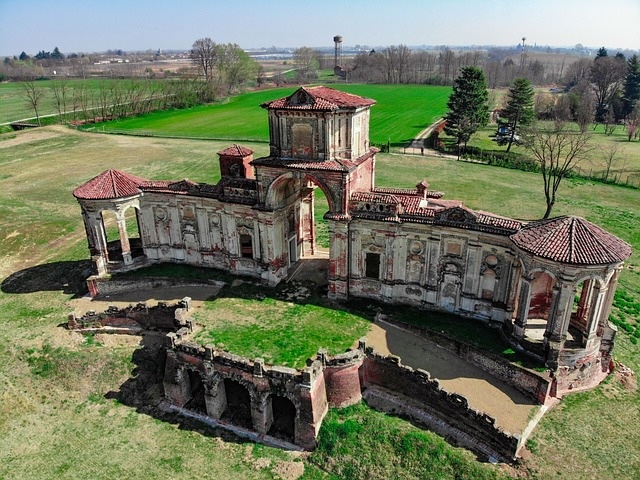
Preserving the Past: The Future of the Tea House
While the Tea House remains in a delicate state, its inclusion in guided tours has sparked renewed interest in its preservation. Many hope that this attention will lead to restoration efforts, ensuring that future generations can experience its beauty firsthand. In the meantime, its weathered appearance serves as a poignant reminder of the passage of time and the importance of preserving historical landmarks.
Why the Tea House Matters
The Tea House is more than just an architectural relic; it’s a symbol of a lifestyle that valued leisure, beauty, and the harmony between nature and design. Its story adds depth to the narrative of the Castle of Chignolo Po, offering a glimpse into the personal lives of those who once called it home.
Visiting the Tea House is an opportunity to step back in time and reflect on the legacy of those who built and cherished it. Whether you’re a history enthusiast, an architecture lover, or simply someone seeking a peaceful escape, the Tea House invites you to pause, admire, and dream.
So, the next time you find yourself in Lombardy, take a detour to the Castle of Chignolo Po. Let the Tea House captivate you with its timeless beauty and transport you to a world of elegance and refinement.
